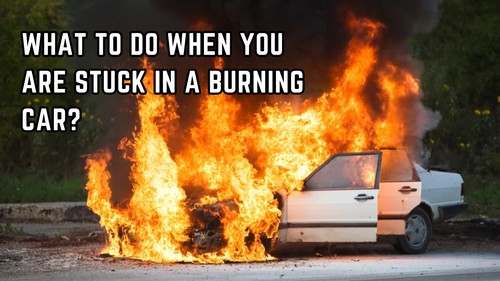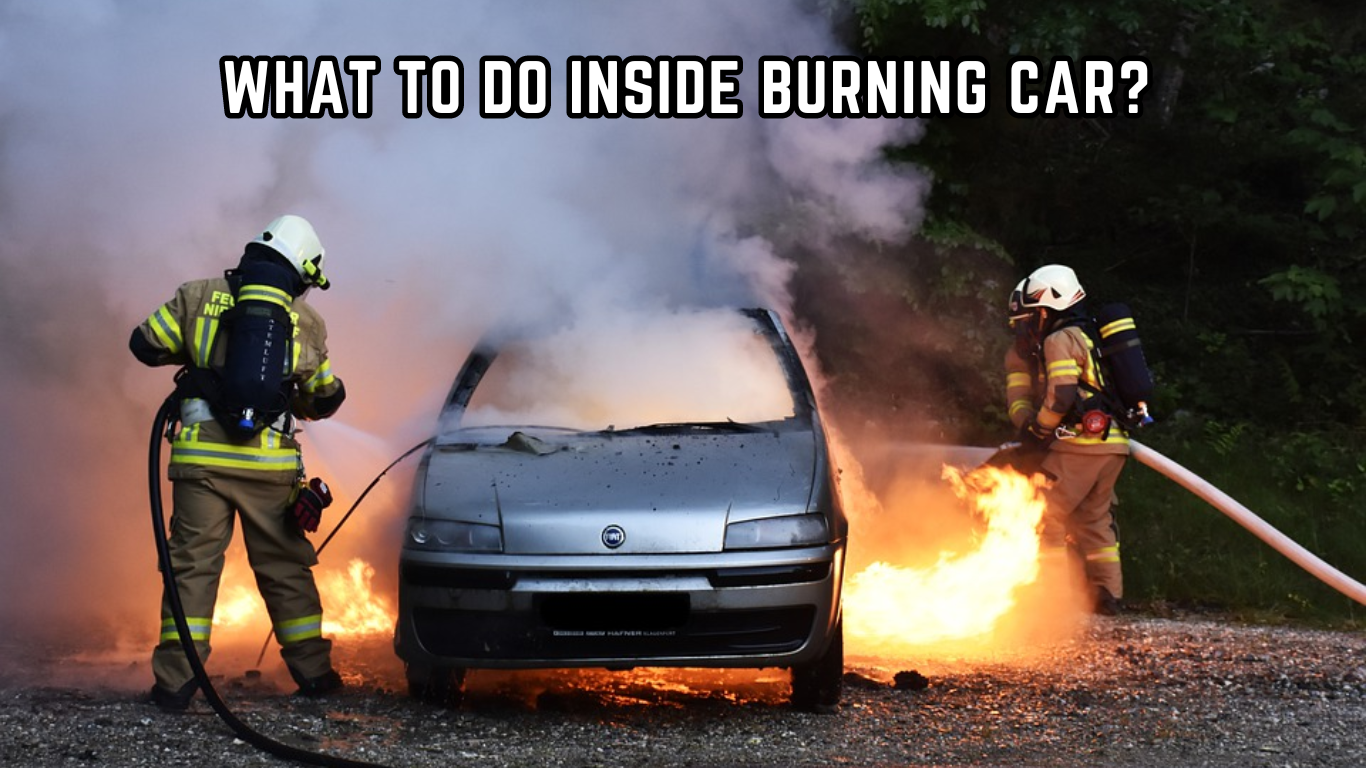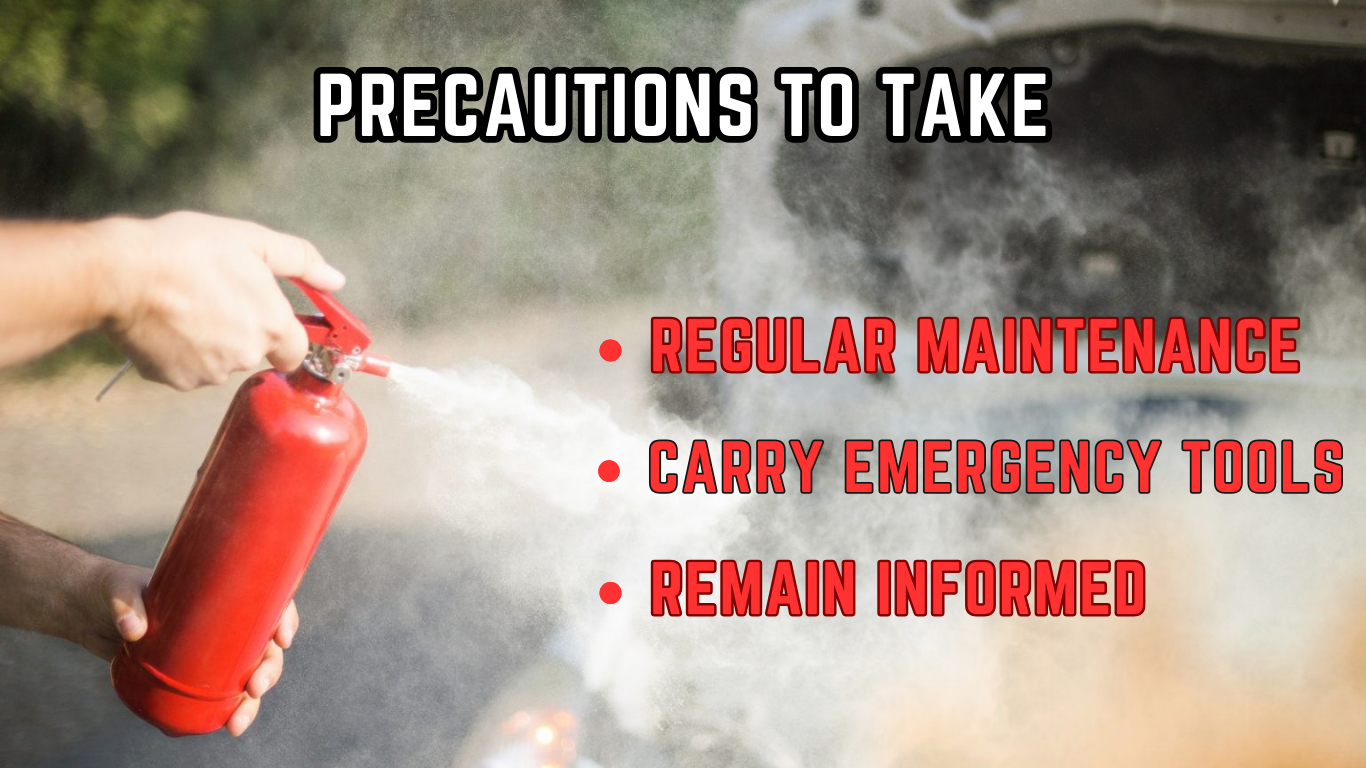What to do when you are stuck in a Burning car?
By Mohit Kumar

4344 Views
Learn essential strategies and practical tips for safely navigating a burning car situation on our comprehensive website.

According to the National Fire Protection Association (NFPA), there were an estimated 189,500 vehicle fires in the United States in 2019, resulting in 560 civilian deaths, 1,500 civilian injuries, and $1.9 billion in direct property damage. This means that on average, there were 519 vehicle fires per day, or one every three minutes. The majority of these fires (83%) involved cars, trucks, or other highway vehicles.
The leading causes of vehicle fires were mechanical or electrical failures, followed by intentional acts of arson. Vehicle fires pose a serious risk to the occupants, bystanders, and the environment, and require effective prevention and response strategies.
According to the Accidental Deaths and Suicides in India (ADSI) report published by the National Crime Records Bureau (NCRB), there were 11,037 fire accidents reported across the country in 2019. Out of these, 1,194 were caused by fire in vehicles (automobiles).
This means that for every 100,000 fire accidents, about 10,819 involved cars. However, this number may not reflect the actual incidence of car fires, as many cases may go unreported or misclassified.
Being trapped in a burning car is a terrifying scenario, but staying calm and taking decisive actions can significantly increase your chances of survival. Here's a guide on what to do if you find yourself in this harrowing situation.
What to do inside burning Car
 Staying Calm is Crucial
Staying Calm is Crucial
First of all Assess the Situation Quickly: The moment you realise your car is on fire, stay calm and assess the situation. If you see smoke or flames, act swiftly but without panicking.
Then Alert Emergency Services: Dial emergency services immediately. Clearly communicate your location and situation. If possible, provide landmarks or nearby intersections to help responders locate you faster.
Exiting the Vehicle Safely
Unbuckle Seat Belts and Act Fast: Unbuckle your seatbelt and check the doors. Attempt to open them; if they don’t open, do not waste time forcing them. Move to the next step immediately.
Use Windows or Doors: If the doors won't open, try rolling down windows. Modern cars often have power windows that may work even when the vehicle's electrical systems fail. Use any available means to escape, including breaking windows if necessary.
Mind the Smoke: If the car is filling with smoke, stay close to the floor where the air is clearer. Cover your mouth and nose with a piece of clothing to filter out smoke inhalation.
Self-Protection Measures
Protect Yourself: If you can't exit the car, find a way to protect yourself from the flames. Stay as low as possible, covering yourself with any available material like floor mats, blankets, or clothing to shield against heat and flames.
Exit Through Trunk: If the car has foldable rear seats that lead to the trunk, consider exiting through there if it's a safe option.
Stay Away from Fuel Sources: Move away from the car once you've escaped to a safe distance. If you're on a busy road, try to get as far from traffic as possible to avoid further danger.
Precautions to Take

Regular Maintenance: Regularly service your vehicle to minimise the risk of mechanical failures that could lead to fires.
Carry Emergency Tools: Keep a car escape tool in your vehicle, which includes a seatbelt cutter and window breaker. These tools can be a lifesaver in emergencies.
Remain Informed: Stay informed about vehicle recalls and safety issues related to your car model. Address any concerns promptly to avoid potential hazards.
Causes of Fire
The causes of car fires can vary, but some common factors include electrical faults, fuel leaks, overheating, collisions, vandalism and arson. The type of fuel also affects the risk of fire.
According to a study by the London Fire Brigade, petrol vehicles are ten times more likely to catch fire than electric cars. This is because petrol is highly flammable and can ignite easily when exposed to sparks or high temperatures.
Electric cars, on the other hand, have batteries that are designed to prevent thermal runaway and have multiple safety features to prevent short circuits and overcharging.
Car fires can have serious consequences for the environment, public health and safety. They can release toxic gases and pollutants into the air, such as carbon monoxide, nitrogen oxides, particulate matter and hydrocarbons.
They can also cause injuries and fatalities to the occupants and bystanders, as well as damage to property and infrastructure.
Therefore, it is important to take preventive measures to reduce the risk of car fires, such as maintaining the vehicle regularly, checking for leaks and defects, avoiding overloading and carrying flammable materials, and following safety instructions in case of a fire.
Final Thoughts
While being stuck in a burning car is a nightmare, maintaining a level head and acting swiftly can save lives. Regular maintenance, preparedness with safety tools, and quick decision-making are key elements in ensuring your safety in such critical situations. Remember, your life is paramount—act fast and sensibly to increase your chances of survival.